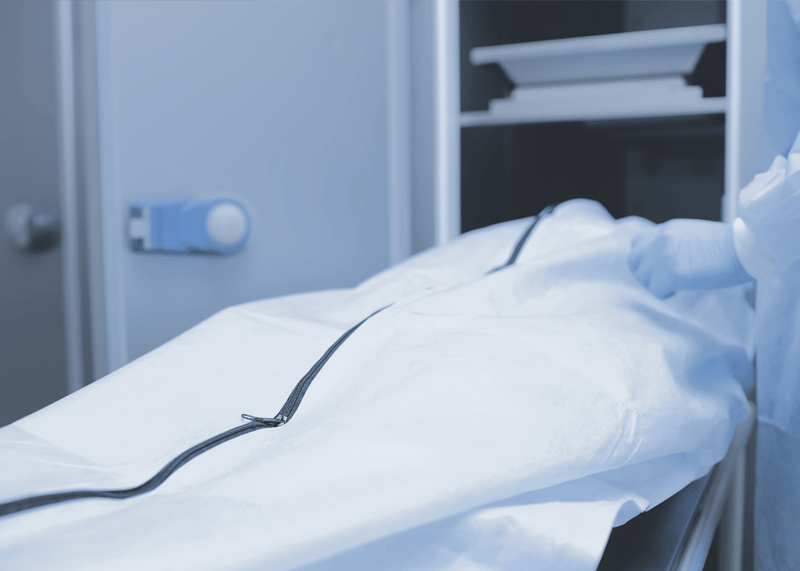News
Body of Evidence
 Standing in front of the LA County Department of Medical Examiner-Coroner, a group of paralegals donned blue latex gloves and paper booties over their shoes. They held face masks they would slip on once inside.
Standing in front of the LA County Department of Medical Examiner-Coroner, a group of paralegals donned blue latex gloves and paper booties over their shoes. They held face masks they would slip on once inside.
The protective gear would be needed during the LA County Public Defender paralegals’ recent tour of the facility.
“Just remember if you drop any of your belongings on the floor, there is no three-second rule at the Coroner’s,” said Captain John Kades, who conducted the tour. “You will not want it back.”
Not for the faint-hearted, the visit taught paralegals how Coroner’s physicians and forensic technicians conduct scientific investigations into causes and manners of sudden, suspicious or violent deaths that occur in Los Angeles County. Many of these deaths become cases handled by the Public Defender.
“As paralegals, it’s good for us to explore and experience all sides involved in what we do at the Public Defender’s Office,” said paralegal Miriam Singer, who organized the tour.
“We should see what the PDs are up against in court when a client is accused of murder. To be a good, well-balanced and knowledgeable paralegal we have to expose ourselves to various agencies and departments. It makes us better paralegals.”
Once inside, they surrounded a gurney where a cadaver was being prepped for an autopsy. Kades noted a white, Formica board hanging on a wall where the number 398 was scrawled in black marker — the current body count in storage.
“That is a little higher number than I like to see because our crypt capacity is 500,” Kades said. “So if we had an emergency disaster, I’ve only got a 100-body buffer. Then we have to bring in refrigerated tents and trucks.”
The crypt that houses the bodies was kept at 38 degrees.
“If you see a body wrapped up in a bedsheet that means there’s no reason for it to be examined by our doctors,” he explained. “If you see a body with clothing on it that means it’s a homicide or traffic accident and the clothing’s not taken off until right before the autopsy because it’s considered evidence.”
Around the corner, paralegals watched through a window as doctors examined bodies. Kades explained the importance of discoloration. Investigators check whether the degree of lividity is consistent with the position the body was found.
“It’s not uncommon for someone to be killed or die some place and they put them in a car to stage it to look like something else,” Kades said. “That’s what we’re looking for.”
Kades said to forget what you’ve learned on CSI.
“You see a lot of CSI and television programs and they’re always saying, ‘Well, I estimate the person’s been dead for six hours but no more than eight.’ That’s a lot of baloney. There’s no test we can do to conclusively say how long a person’s been dead.
“It’s a guess, an estimate,” he continued. “We can look at the lividity, we can look at the degree of rigor mortis. But the best way to find out how long a person’s been dead is to check the last time they sent a text message. Or how old the mail is in the mailbox.”
That day, the office conducted 18 autopsies. In the past, Kades said, the office has done as many 50 in a day. Twelve were homicides, six were John and Jane Doe cases. Four were juveniles. “A normal day for us,” he said.
Senior Paralegal Lauren Fukai said she was surprised to learn that the Coroner’s cremates unclaimed bodies after 30 days even when they are considered a homicide.
“As much as you prepare yourself for the Coroner’s tour, there is no real way to know what you’re about to experience,” Fukai said. “I knew we were about to see things we’ll likely never be able to un-see.”
Paralegal Derek Shao said he was interested to learn how the Coroner’s Office handles evidence and autopsy reports. Records go back to the 1800s and some of those reports describe how a person died after being run over by horse and buggy or “ambushed by Indians.” Autopsy reports are open to the public unless they are active investigations in which case they are sealed.
“The tour was quite eye-opening,” Singer added. “We saw the raw unfiltered environment those folks work in, the real science was explained and seen close up.”
Supervising paralegal Rhonda Cameron said that paralegals are an integral part of the defense team.
“It’s important that they not only stay current on the laws that effect our clients, but also be able to provide informed input to the defense team regarding all aspects of the criminal system,” Cameron said.
“Tours, such as this — as well as the upcoming tour to the Hertzberg Davis Crime Lab in November — ensure that our paralegal staff maintain the standard of excellent defense work that the Public Defender’s Office provides.”
Photo Captions:
Photo 2:
Captain John Kades (right) debriefs paralegals after the tour. From left: Jessica Lopez, Derek Shao and Frank Gonzales.
Photo 3:
Exiting the tour are paralegals Jocelyn Flores, Miriam Singer, Jessica Lopez and Derek Shao
